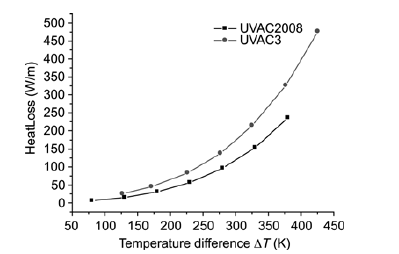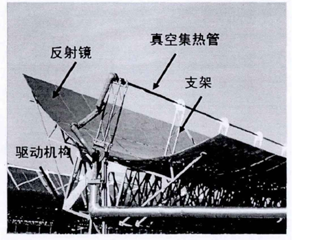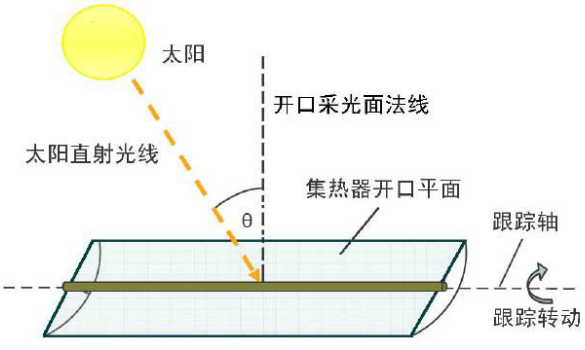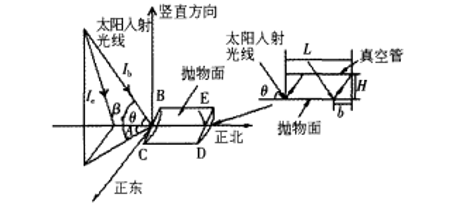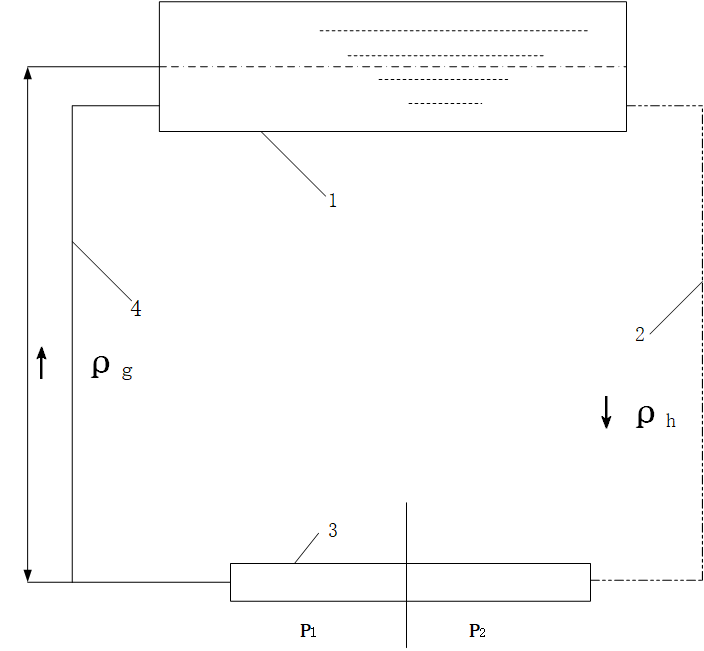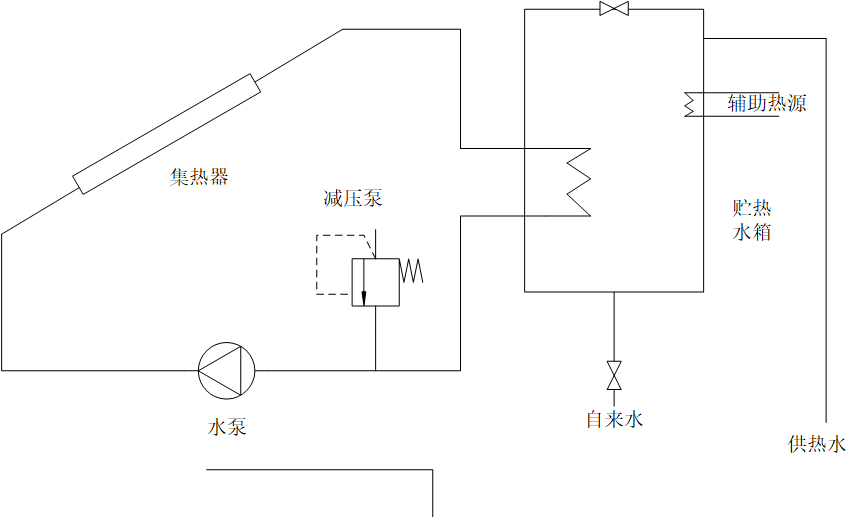基于油水分级导热的新型太阳能供暖系统毕业论文
2020-04-10 16:01:38
摘 要
共建建设低碳社会,大力发展低碳经济,已成为当前世界着重发展的新目标。一直以来,我国供热效率很低,煤耗大,等一系列问题,对环境造成了较大的影响和破坏。对此我国大力发展推广太阳能供暖系统,解决一系列传统供热的弊端并带来经济效益。本课题研究的是一种基于油水分级集热方式的新型太阳能采暖系统。
太阳能作为一种重要的清洁能源,在控制污染、减少灰霾、改变能源结构和生态文明等方面发挥着越来越重要的作用,尤其是在北方采暖领域,优势明显。利用太阳能采暖,能大量减少有害物质的排放,对减轻雾霾污染,节约能源着非常重要的意义。但我国北方城镇采用太阳能加热的热水取暖系统主要存在以下问题:以水为集热介质的传统太阳能集热系统对太阳能的利用率较低;导热介质水易蒸发,寒冷天气下容易发生冻堵,并且容易结垢是的真空管发生堵塞;易发生渗漏、管道腐蚀等现象;循环管路复杂,系统稳定性较差。
在上述背景的驱动下,本项目提出一种新型太阳能供暖装置,采用传热效率高、散热快、热稳定性强的导热油代替传统供暖装置中的水作为导热介质,设计一种基于油水分级导热的新型太阳能供暖系统。
本项目主要由三个子系统组成,分别是太阳能集热系统、油水换热控温系统、密闭管路循环系统,通过以上系统的设计实现了太阳能在供热系统中的应用,达到了节能减排的目的。
1.太阳能集热系统:该系统以太阳能为热源,通过采用抛物线槽式设计、太阳能跟踪技术、新型集热管以及对导热油自循环技术的应用,实现了现有技术下对太阳能的最大化利用。
2.油水换热温控系统:该系统以油水换热器为主体,并增加辅热装置和储能箱以保证供热的稳定性。油水换热器采用列管式换热方式以达到换热效率的最大化,辅助加热装置与储能箱相结合以保证温度的可控性。
3.密闭管路循环系统:该系统分别通过对导热油和导热水的循环控制,以降低传输过程中的热损失,达到提高能量利用率的效果。由工质泵为循环提供动力并优化管系结构以实现导热介质的自适应循环,从而保证系统的稳定运行。
通过后期MATLAB simulink建模验证系统可行性并进行调试更改相关设计参数,完善系统设计
关键词:槽型反射器,太阳能跟踪系统,导热油循环,模糊PID控制,
simulink
Abstract
To jointly build a low-carbon society and vigorously develop a low-carbon economy has become a new target for the current development of the world. In China, energy consumption in construction, industry, and transportation together constitute the major source of energy consumption in China. At present, China's total building energy consumption accounts for about 20% of the total energy consumption of the social terminal. For northern China, the energy consumption for heating is about 36% of the total energy consumption of the building. China's heating efficiency is very low, coal consumption is large, and a series of other problems have caused great impact and damage to the environment. At the same time, the conditions of solar energy resources in northern China are very rich. It is suitable for promoting the solar heating heating system, so that it can obtain better economic and social benefits and solve the drawbacks of a series of traditional heating.
The heating system converts pure solar energy to supplement the internal energy consumption of the building. Effectively reduce the building's conventional energy consumption, achieve low carbonization and even "zero energy consumption", providing people with a good home living space. The research content of this topic is a new type of solar heating system based on oil-water grading and heat collection methods.
As an important clean energy, solar energy plays an increasingly important role in controlling pollution, reducing ash, changing energy structure and ecological civilization, especially in the field of heating in the north, with obvious advantages. The use of solar heating can greatly reduce the emission of harmful substances, and it is very important to reduce smog pollution and save energy. However, the use of solar-powered hot water heating systems in northern cities and towns in China mainly has the following problems: The traditional solar collector system that uses water as the heat-collecting medium has a low utilization rate of solar energy; the heat-conductive medium water is easy to evaporate; , And easy fouling is the occurrence of clogging of the vacuum tube; prone to leakage, pipeline corrosion and other phenomena; circulation pipeline complex, poor system stability.
This project is mainly composed of three subsystems, namely solar collector system, oil-water heat exchanger temperature control system and closed circuit circulation system. Through the design of the above system, the application of solar energy in the heating system has been achieved, and energy saving and emission reduction has been achieved
1. Solar Collector System: This system uses solar energy as a heat source. By using a parabolic trough design, solar tracking technology, a new collector tube, and the application of self-circulation technology for heat-conducting oil, the system has achieved maximum utilization of solar energy under the existing technology.
2. Oil-water heat exchange temperature control system: This system uses oil-water heat exchanger as the main body, and adds auxiliary heat devices and energy storage tanks to ensure the stability of heating. The oil-water heat exchanger adopts the tubular heat exchange method to maximize the heat exchange efficiency, and the auxiliary heating device is combined with the energy storage tank to ensure the controllability of the temperature.
3. Closed circuit circulatory system: The system through the control of the thermal oil and heat transfer water, respectively, in order to reduce the heat loss during the transmission, to improve the energy efficiency. The working fluid is provided by the working fluid pump to optimize the piping structure to realize the self-adaptive circulation of the heat transfer medium, so as to ensure the stable operation of the system.
Verify the feasibility of the system through the later MATLAB simulink modeling and debug to change the relevant design parameters and improve the system design
Key words: trough reflector, solar tracking system, heat transfer oil circulation, fuzzy PID control, simulink
目录
第1章 绪论 1
1.1. 研究背景 1
1.2. 研究目的及意义 1
1.3. 研究方法设计 2
1.3.1. 设计思路 3
1.3.2 系统构成图 3
第2章 太阳能集热系统模块设计 4
2.1. 新型集热管设计 4
2.2. 抛物槽反射器选择设计 7
2.3 太阳能跟踪机构 8
2.4. 集热器循环系统设计 10
2.5. 本章小结 11
第3章 油水换热器模块设计 12
3.1. 油水换热器选择及设计 12
3.2. 油水换热站 15
3.2.1. PID 温度控制器设计 15
3.2.2. 模糊控制设计 16
3.2.3 控制方案仿真 21
3.3. 辅热装置的选择设计 23
3.3.1. 储能水箱的设计 23
3.4 本章小结 24
第4章 密闭管路循环系统 25
4.1. 密闭管路循环系统基本组成 25
4.2. 导热油的选定标准 25
4.3. 油体流速设计 25
4.4. 膨胀罐设计 26
4.5. 储油罐设设计 26
4.6. 管路设计 26
4.7. 水循环系统 27
4.8. 本章小结 27
第5章 仿真性能分析 28
第6章 总结及展望 30
6.1总结 30
6.2展望 30
致谢 30
参考文献 31
第1章 绪论
研究背景
随着社会的不断发展进步,常规的化石能源的短缺现象日益严重,对可再生能源的需求日益增加,对于开发使用可再生能源意愿也越发强烈。太阳能作为主要的清洁可再生能源,在世界范围内得到了广泛的应用和研究,受到世界各国的青睐。太阳能在欧洲的地区被广泛应用,其使用技术一直处于世界前列。太阳能采暖系统工程技术的的研究,在欧洲已经进行了半个多世纪。在过去,供暖系统的模式主要采用单一的小型系统。近十年来,区域供热和大规模太阳能供热等综合系统工程发展迅速,得到了广泛关注。
太阳能加热是利用太阳能集热器收集太阳辐射并将其转化为热能进行加热的技术。太阳能加热系统利用太阳能集热器收集太阳辐射并将其转化为热能,以液体为传递介质,以水为蓄热介质,通过散热组件将热量输送到室内进行供暖。
我国太阳能采暖系统的应用起步较晚,与国外情况相比,我国的技术相对落后,大部分太阳能采暖系统的设计,技术上仍然不成熟,而且我国的能源形势越来越严峻,而且太阳能资源比欧洲国家丰富,因此我国的太阳能采暖还需要进一步发展。天津大学、东南大学、上海交通大学等相继对太阳能采暖系统进行了实验和理论研究,目前太阳能采暖系统技术及应用已取得初步成果。
随着太阳能应用的日益广泛,根据国家号召,"十三五"期间需要加强以下几个方面的工作:1.太阳能蓄热技术研究。今后研究重点是太阳能蓄热材料和蓄热系统的研究,研制性能可靠、成本低廉的短期蓄热和季节性蓄热技术。2、大力发展推进推进被动式太阳能采暖技术发展,加强被动式太阳能采暖系统的热设计,提高太阳能贡献率、热效率和集热部件的热舒适性;形成不同区域的参考图集和配套技术方案。
研究目的及意义
建筑能耗己经成为我国社会终端三大主要能耗之一。我国目前采暖效率很低,严重的资源浪费对环境的影响和破坏巨大。鉴于上述因素,并考虑到北方的地域特点,推广太阳能采热供暖系统,从而获得获得较好的经济效益和社会效益。
太阳能供暖系统优点是: 1 .高效、节能、可节约能源成本40 - 60 %左右,大大降低了运行成本。2 .绿色环保,采用太阳能清洁绿色能源,减少化石燃料燃烧的污染,为用户提供
清洁舒适的生活空间。3 .智能控制系统采用智能控制技术,自我控制,经济运行最佳,可设置全天候热水供应,使用十分方便。4 .集热管的使用寿命采用铜管激光焊接,聚氨酯泡沫保温防寒,进口面板回火处理,可抵御自然灾害,使用寿命15年以上。5 .应用广泛适用于多种建筑场所。
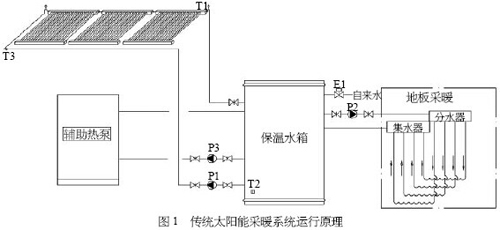
图1.传统太阳能采暖系统运行原理:
该系统的工作原理是:利用太阳能集热器吸收太阳能辐射能量将集热器中的水加热,集热器内的水通过集热器循环对保温水箱内的水进行加热;当水箱温度达到加热温度要求时,直接供水加热;当温度低于加热温度时,启动辅助能源(锅炉、空气源热泵等)加热水箱内的水,达到设定温度后停止供水。但是该系统存在以下问题:
1)冬季太阳能供热不足:冬季太阳能采暖效率偏低,为保证系统正常运行,水箱温度度不会低于采暖回水温度30度,在此基础上靠太阳能升温,集热效率较低。
2)非采暖季系统过热:非采暖季太阳能产热过多,系统过热会造成部分橡胶件老化,同时容易导致真空管易炸,引起集热效率降低,缩短管道寿命
研究方法设计
设计思路
通过查阅资料,总结分析对比,设计一种以太阳能为主供热能源,辅以辅助加热装置,以导热油和水为传热介质,通过导热油加热水并使水不断在密封管路中循环散热以达到供暖目的一种装置,系统设计内容大致包括以下三个方面:分别是太阳能集热系统、油水换热控温系统、密闭管路循环系统。
太阳能集热系统:该系统以太阳能为热源,通过。采用抛物线槽式设计、太阳能跟踪技术、新型集热管以及对导热油自循环技术的应用,实现了现有技术下对太阳能的最大化利用。
油水换热温控系统:该系统以油水换热器为主体,并增加辅热装置和储能箱以保证供热的稳定性。油水换热器采用列管式换热方式以达到换热效率的最大化,辅助加热装置与储能箱相结合以保证温度的可控性。
密闭管路循环系统:该系统分别通过对导热油和导热水的循环控制,以降低传输过程中的热损失,达到提高能量利用率的效果。由工质泵为循环提供动力并优化管系结构以实现导热介质的自适应循环,从而保证系统的稳定运行。
系统构成图
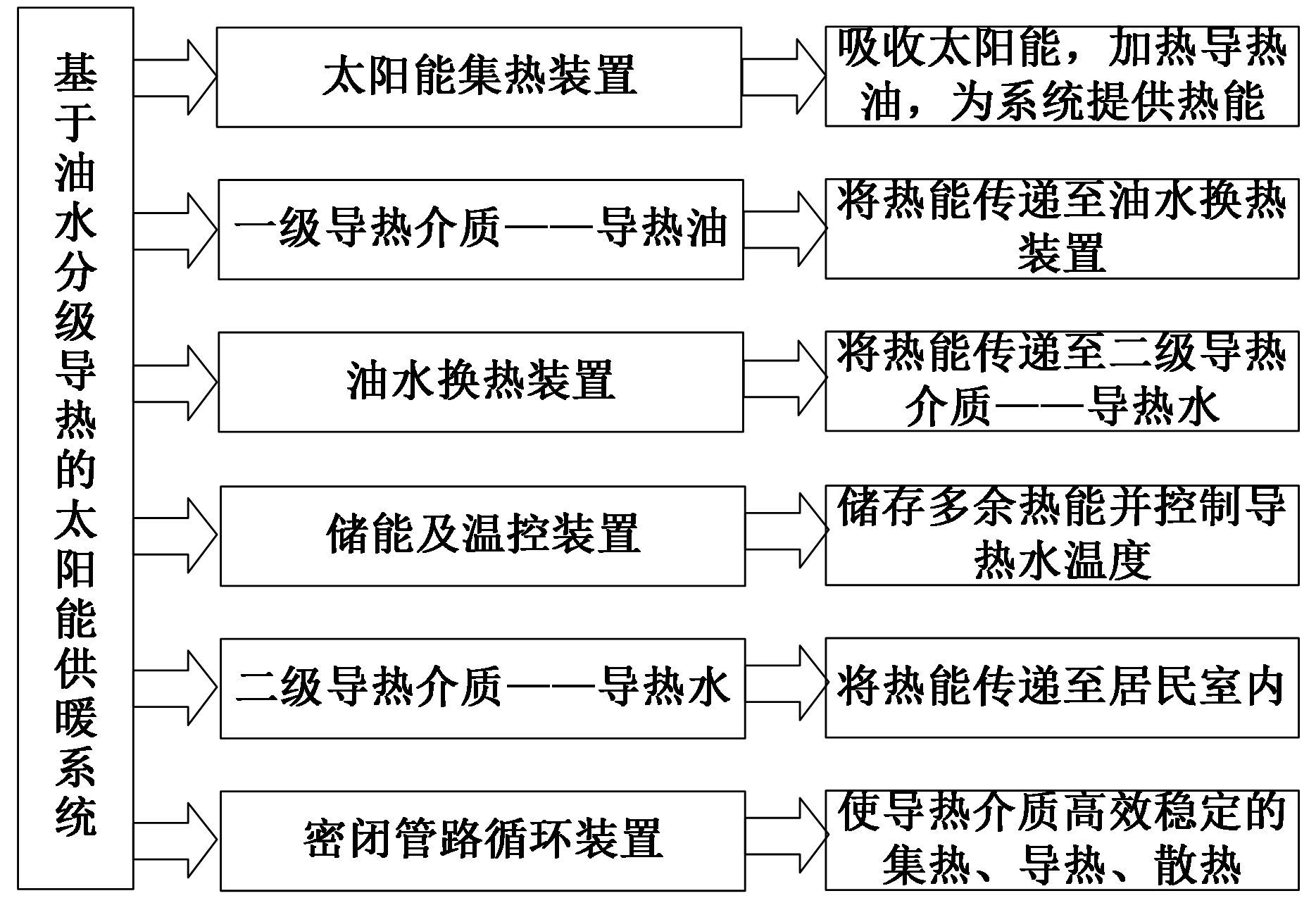
第2章 太阳能集热系统模块设计
新型集热管设计
完成集热管结构、集热管材质设计、关于导热油集热的分析计算。分析不同类型集热管对光热转换效率的影响和在不同工况下的利弊,参考国内外相关集热管的结构,确定集热管类型。本装置中的集热管结构设计需要适应北方特殊的工作环境,提高光热转换效率,因此我们与之相对应地设计了该种全玻璃真空集热管,设计时充分考虑耐冻性和焖晒时热偏差的因素。在完成结构和材质设计后,进行导热油流量与热效率的分析计算。
表1 几种传统集热管性能综合对比分析
以上是毕业论文大纲或资料介绍,该课题完整毕业论文、开题报告、任务书、程序设计、图纸设计等资料请添加微信获取,微信号:bysjorg。
相关图片展示:
